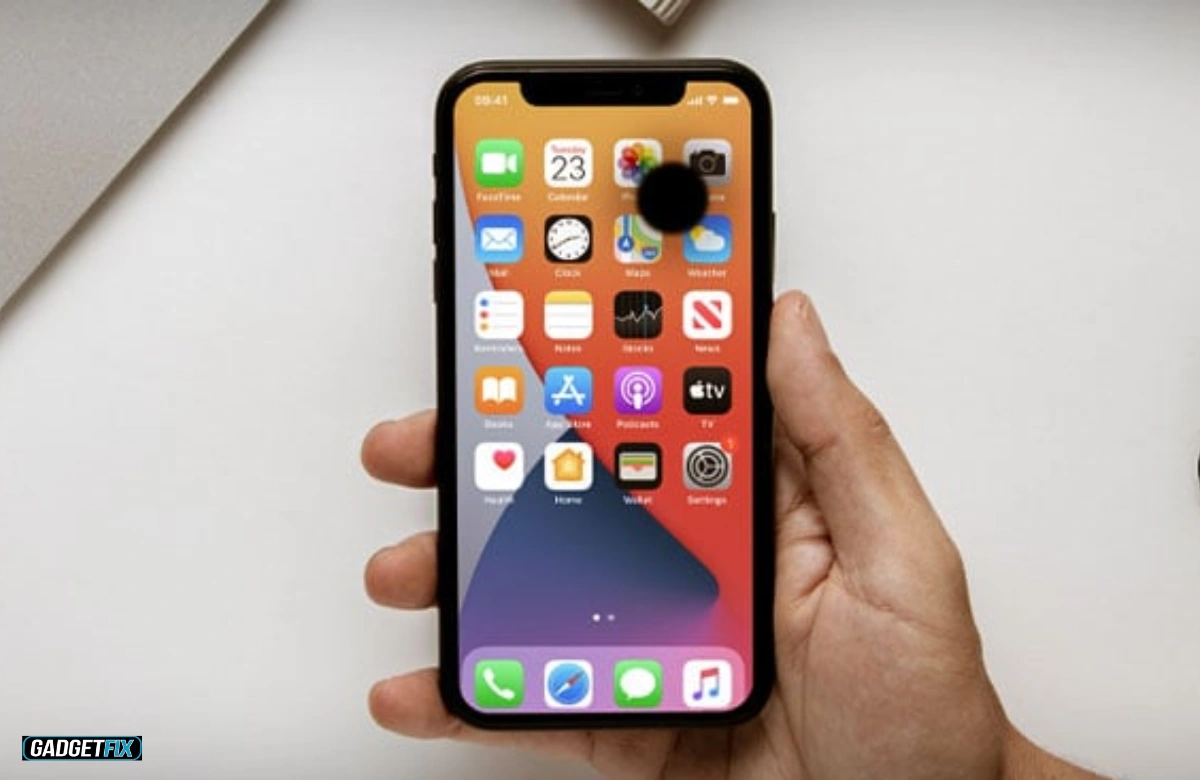Noticing a black spot on your iPhone screen can be stressful, especially when it starts to spread. These spots usually indicate an LCD or OLED display issue, and the appropriate solution depends on the underlying cause. Black spots can appear due to physical damage from drops or impacts, pressure applied to the screen, software glitches that mimic display defects, or exposure to water or moisture inside the device. Understanding the reason behind the black spot is key to choosing the right troubleshooting steps and preventing further damage.
Causes of Black Spot on an iPhone Screen and Best Solution
Here are the main causes and solutions:
1. Physical Damage
If your iPhone has been dropped or subjected to pressure, the black spot is likely caused by damaged pixels, broken LCD layers, or leaking liquid crystals. Over time, these spots can expand and affect larger screen areas.
Solutions:
- Avoid further pressure: Stop pressing or tapping on the affected area. Use a protective phone case to minimize stress on the display.
- Inspect for cracks: Look for visible or lifted edges around the screen. If present, a screen replacement is the only permanent fix.
- Get a professional assessment: A repair technician can determine whether reseating display connectors or replacing internal screws can help before opting for a full screen replacement.
- Replace the damaged display: If the black spot keeps spreading, replacing the LCD/OLED panel is necessary to restore full-screen functionality.
2. Software Glitches
Sometimes, what appears to be a black spot might be a temporary rendering issue or a stuck pixel caused by software bugs. This is rare, but it’s worth troubleshooting before deciding on repairs.
Solutions:
- Restart your iPhone: A simple restart can clear temporary display glitches.
- Perform a hard reset: On Face ID models, quickly press and release the volume up button, then the volume down button, and hold the side button until the Apple logo appears. This refreshes the system without deleting data.
- Update iOS: Go to Settings > General > Software Update to ensure your iPhone is running the latest version. Updates often fix bugs that cause display issues.
- Run a diagnostic test: Use the Apple Support app or visit an Apple Store to check whether the problem is hardware- or software-related.
3. Water or Moisture Damage
Black spots can also appear if your iPhone has been exposed to water, high humidity, or liquid spills. Moisture trapped under the screen can cause discoloration that worsens over time.
Solutions:
- Turn off your iPhone immediately: Using the device while wet can short-circuit components.
- Dry the phone safely: Place the phone in a dry, ventilated area or use silica gel packs. Avoid using rice, as dust particles can get inside the device.
- Avoid charging: Charging a wet iPhone can damage the motherboard and screen connectors.
- Seek professional repair: If moisture has entered the screen layers, you’ll likely need a screen replacement or deeper repair service.
When to Get Professional Help?
If the black spot spreads despite your efforts, the LCD is likely damaged and needs replacing. Professionals have the right tools to replace the screen without damaging other parts. They can also check for any critical issues with the motherboard or connectors. Choosing a certified repair service ensures you get quality parts and a warranty.
Professional repair shops also carefully handle screen replacement, reducing the risk of dust or debris inside the phone. This gives you a long-lasting fix rather than a temporary solution.
Precautionary Measures to Prevent Black Spots
While not all damage is avoidable, following these steps can reduce the risk of black spots developing on your iPhone screen:
- Use a sturdy case and tempered glass protector to protect against drops and scratches.
- Avoid exposing your iPhone to extreme temperatures that can weaken screen components.
- Keep your device away from liquids and humid environments.
- Do not keep your phone in tight pockets or bags where pressure can be applied to the screen.
- Handle your device carefully, avoid tossing it onto hard surfaces or pressing too hard on the display.
Conclusion
Physical damage, software glitches, or water damage can cause a black spot on your iPhone screen. Restarting your phone, updating iOS, and avoiding pressure can sometimes help, but if the spot continues to spread, the best solution is a professional screen replacement.
Don’t wait until the damage makes your iPhone unusable. For fast, reliable, and expert iPhone repair services, contact GadgetFix today and restore your screen to perfect condition.

